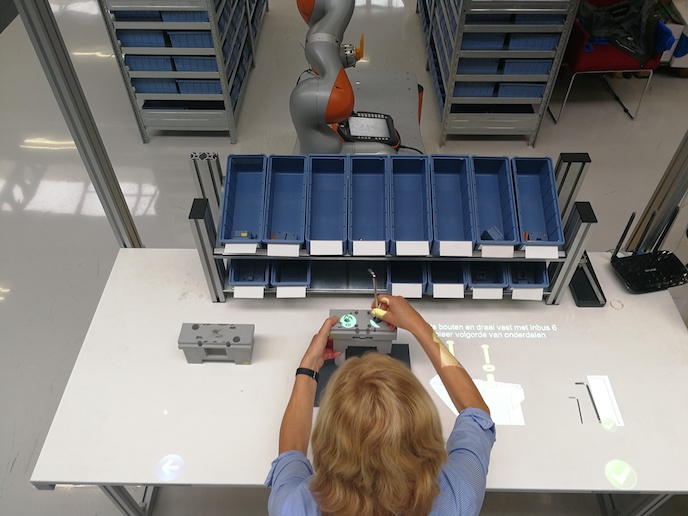Bringing efficiency to the smart factory
The fourth industrial revolution is already under way. European businesses are moving to embrace it, and starting to integrate robotics and other smart technologies into the workforce. Even for those that have introduced robotics into manufacturing, the use of robots is still not efficient. Safety regulations continue to keep robots isolated from humans. Collaborative robots, designed to work alongside humans, don’t always resolve safety issues if the technology behind the collaboration isn’t up to scratch. Humans and robots are also given specific tasks, and it is difficult to change these quickly as is often needed in manufacturing. “Digitisation encompasses much more than just buying and setting up an industrial robot,” says Anastasia Garbi, head of Research and Development at European Dynamics. HORSE is an EU-funded project that aimed to take a leap forward for the manufacturing industry, by proposing new flexible and versatile production lines. The project offers a new model for the smart factory, involving efficient collaboration of humans, robots, automatic guided vehicles and machinery. The HORSE system was trialled in 10 pilots, in diverse manufacturing factories in seven European countries. Within 9 months, seven of these pilots, the so-called second wave, had adopted the HORSE framework and components and deployed them in novel and ambitious ways, project coordinator Garbi adds. “All of them were able to demonstrate important robotic automation solutions in challenging applications which had not been resolved prior to HORSE. They proved the value of our tools and concepts and they extended the prototype tools with additional components,” explains Garbi.
Framework for the future
The HORSE framework supports human-robot collaboration tasks. An array of software modules provide functions like robot program configuration, real-time work cell safety monitoring, and flexible exception management - useful when something abnormal happens during production. A manufacturing process management system orchestrates end-to-end control of activities on the shop floor, featuring a dynamic allocation mechanism for human and robot workers, and a real-time process monitoring dashboard.The system also supports augmented reality, allowing users to perform complex tasks without errors. HORSE is built using a highly modular architecture, meaning it can be configured to the manufacturing task at hand. “The rest of the systems are not visible to the human, they are supporting and optimising robotic tasks,” adds Garbi. A HORSE prototype system was built to show the full capabilities, and can be deployed and configured to individual factory requirements. HORSE offers a service for installation either locally or on the cloud. Selected components of the system can be downloaded and used as needed, providing more flexibility for each factory. Some of the possible technologies that use HORSE include: augmented reality for quality control and product assembly and an automated grinding system.
Digital Innovation Hubs
The project also paved the way for the creation of Digital Innovation Hubs, and established five of them: two in Germany, and one in France, the Netherlands and Slovenia. These act as regional hubs, offering a place for consultation, training, demonstration and experimentation. The idea is to engage European SMEs with Industry 4.0 and keep them competitive in the global business landscape. “These hubs interconnect regional policymaking authorities, technological suppliers and manufacturing industries, which are looking for the paths toward adopting advanced technologies,” concludes Garbi.
HORSE Book
The HORSE architecture and system, as well as their application in ten industrial cases, are described in detail in the HORSE book, which is available through Amazon and other book retail channels from mid-February 2021.
Keywords
HORSE, smart, factory, framework, technology, augmented, reality, monitor







